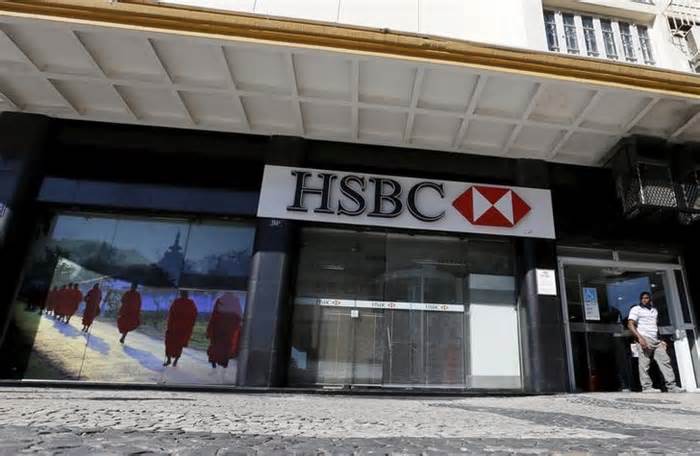By Sara Rossi
MILAN (Reuters) – The first half of next year will offer favourable conditions for Italian government bonds after a stellar 2023, analysts say, but problems may surface from June onwards connected with politics and future moves by the European Central Bank.
The sustainability of Italy’s 2. 4 trillion euros ($2. 6 trillion) public debt, one of the world’s largest government bond markets, has long been seen as a weak link to the stability of the 20-nation currency bloc.
Those considerations have been exacerbated by a series of ECB rate hikes since last year to combat inflation, which have pushed euro area interest rates to record highs.
But Italian bonds have generated strong demand through 2023 thanks to high yields, and are ending the year on a high note after Rome defied expectations by withstanding a series of potentially dangerous reviews by credit bureaus.
The closely-watched gap between the yields on Italian 10-year BTPs and less risky German Bunds fell below 165 basis points (1.65 percentage points) on Tuesday, the lowest level since late August.
Still, it is significantly larger than the gap with Germany of any other eurozone country, a sign that markets remain cautious in the face of Italy’s stubbornly higher debt – equivalent to about 140% of national output.
“In 2024 BTP spreads could widen just a little but not enough to justify an ‘underweight’ position,” said Bruno Rovelli, chief investment strategist at BlackRock (NYSE:BLK) in Italy.
The world’s largest asset manager is “neutral” on BTPs, as it is on European bonds.
Gregorio De Felice, lead economist at Intesa Sanpaolo (BIT:ISP), is more optimistic.
He predicted a trouble-free year for Italian bonds, backed by the stability of Giorgia Meloni’s 14-month government, and said the BTP-Bund spread could be narrowed to 120-130 base issues by the end of the year.
The narrowing of Italian spreads in recent months has dashed analysts’ expectations that the government’s budget to increase the deficit for 2024, presented in October, could provoke negative responses from rating agencies.
Instead, S&P Global, DBRS and Fitch all left Italy’s position unchanged. Moody’s, which rates Rome just one notch above junk, upgraded its outlook to stable from negative.
“With Italy out of the spotlight of rating agencies, foreign buyers could further increase their holdings of Italian debt in 2024,” said Luca Cazzulani, head of strategic research at UniCredit (LON:0RLS).
Despite the interest rate hike last year, foreign holdings of Rome’s debt are still around €100 billion below their pre-pandemic point in 2019.
MID-YEAR CHALLENGES
The picture may be less rosy from mid-year onwards, analysts warn, with dangers posed by the ECB’s tapering of government bond purchases, new EU tax regulations and European Parliament elections.
“The crunch point for Italy could come after the summer, when the government might have to make some difficult choices on the 2025 budget,” said Fabio Balboni, senior economist at HSBC (LON:HSBA).
The ECB’s announcement last week to end the full reinvestment of securities purchased under its Pandemic Emergency Purchase Programme (PEPP) from 30 June could have a significant impact on Italy, the main beneficiary of the programme.
“Early termination of the PEPP rollover could increase dangers for the BTP spread,” Balboni said.
The June 6-9 European parliament elections may also hurt Italian debt if they throw up a strong result for parties less committed to integration, leaving fiscally weaker members like Italy in a more vulnerable position, analysts said.
The outcome of EU negotiations to revamp the bloc’s fiscal rules, which have been suspended since 2020 due to the COVID-19 pandemic, should also be clear by the summer.
If the new Stability and Growth Pact calls for strong debt relief, Italy will most likely default on its terms, analysts say.
This would increase friction with Brussels and the risk that the ECB would refuse to support Rome through its new Transmission Protection Instrument (TPI) which is only available to countries that are compliant with the EU’s fiscal framework.
Italy will want buyers for a net debt pool of about 135 billion euros in 2024, about 20 billion euros more than this year, said Unicredit’s Cazzulani (ILO:IDRC).
The task is made even more complicated by the fact that the ECB, one of Italy’s largest bondholders, continues to reduce its balance sheet.
Domestic retail savers will be a major customer of Rome’s debt next year and foreign investors could also be net underwriters, said Sylvain De Bus, deputy head of global bonds at foreign asset control firm Candriam.
This year the Treasury made a major effort to tap Italian retail investors, who analysts expect will continue to play a significant but somewhat lesser role in 2024.
Small savers’ holdings of Italian government bonds rose to 12. 6% of the total in September from 7. 5% a year earlier, according to the latest data from the Bank of Italy.
Foreign holdings declined to 27.1% from 28.2%, well below a level of 34.6% in March 2020.
($1 = 0.9114 euros)
We inspire you to use feedback to interact with users, share your perspective, and ask questions of authors and everyone else. However, to get to the high point of the speech we all enjoy and look forward to, consider the following criteria:
Spammers or abusers will be removed from the site and removed from listings in the long term at Investing. com’s discretion.
Are you sure you’re going to block %USER_NAME%?
%USER_NAME% has been effectively added to your block list
Since you’ve just unblocked this person, you’ll have to wait 48 hours before renewing the block.

